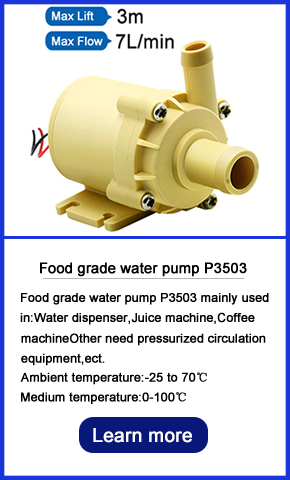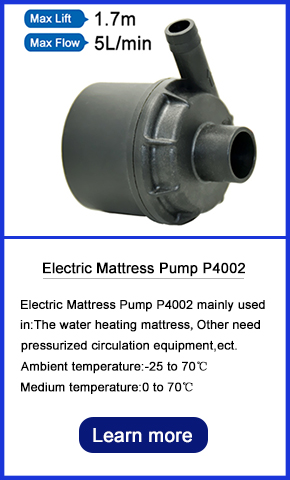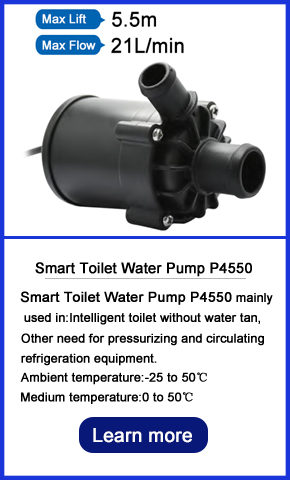Introduction to DC and AC Micro - pumps
Micro - pumps play a crucial role in various industries, and among them, DC micro - pumps and AC micro - pumps are two common types. Understanding their characteristics, differences, and applications is essential for making informed decisions in different applications.
 |  |  |
Definition and Basic Concept
A micro - pump is a small - scale pumping device designed to move fluids with a relatively small flow rate. DC micro - pumps operate on direct - current power, typically sourced from batteries or DC power supplies. AC micro - pumps, on the other hand, run on alternating - current power from the mains or other AC power sources.
Significance in Different Fields
In the energy storage field, micro - pumps are used to maintain the thermal stability of battery packs. In data centers, they are crucial for the efficient cooling of servers and other high - power - consuming equipment. For example, in large - scale energy storage systems, micro - pumps help to circulate the coolant, ensuring the optimal operating temperature of the batteries. In industrial settings, both DC and AC micro - pumps are used in processes that require small - scale fluid transfer, such as in some chemical - processing plants where precise dosing of chemicals is necessary.
Working Principles of DC and AC Micro - pumps
Working Principle of DC Micro - pumps
DC micro - pumps are usually driven by a DC motor. The DC motor operates based on the principle of electromagnetic induction. When an electric current passes through the coil of the motor, a magnetic field is generated. This magnetic field interacts with the permanent magnetic field within the motor, creating a torque that causes the motor shaft to rotate.
The motor shaft is connected to an impeller. As the shaft rotates, it drives the impeller, which is typically made of durable materials like high - quality plastics or corrosion - resistant metals. The impeller has a specific design with curved blades. When it rotates, the blades create a centrifugal force. This force causes the fluid to be drawn towards the center of the impeller and then pushed outwards at a higher velocity, thus achieving fluid transfer.
Working Principle of AC Micro - pumps
AC micro - pumps are powered by an AC motor. AC motors operate on the principle of alternating magnetic fields. The alternating current in the motor's coils creates a magnetic field that constantly changes direction. This changing magnetic field interacts with the rotor, causing it to rotate.
Similar to DC micro - pumps, the rotating shaft of the AC motor drives an impeller. However, the design and operation of AC motors can be more complex due to the nature of alternating current. For example, some AC motors may require capacitors or other components to start and run smoothly. The impeller in AC micro - pumps also functions to create a flow of fluid by generating a centrifugal force when it rotates.
Comparison of DC and AC Micro - pumps
Power Source and Voltage
One of the most obvious differences between DC and AC micro - pumps is their power source. DC micro - pumps are powered by DC voltage, which can range from a few volts (such as 3V, 6V, 12V) depending on the application and the power requirements of the pump. This makes them suitable for applications where a portable power source like a battery is needed, such as in some off - grid energy storage systems.
AC micro - pumps, on the other hand, are powered by AC voltage, usually 110V or 220V in most household and industrial settings. This restricts their use to applications where access to an AC power outlet is available. For example, in large - scale data centers with a stable power grid connection, AC micro - pumps can be used.
Efficiency and Power Consumption
DC micro - pumps often have the advantage of higher efficiency in certain applications. The use of DC motors, especially brushless DC motors, can result in lower energy losses. For instance, in off - grid energy storage systems where power conservation is crucial, the energy - saving feature of DC micro - pumps can significantly reduce the overall power consumption.
AC micro - pumps, while being suitable for high - power applications, may have relatively higher power consumption in some cases. The complexity of AC motor designs and the need for additional components to manage the alternating current can contribute to this. However, in applications where high - power output is required, the power consumption may be a trade - off for the necessary performance.
Lifespan and Maintenance
DC micro - pumps, especially those with brushless DC motors, generally have a longer lifespan. The absence of brushes in brushless DC motors means less wear and tear, resulting in fewer maintenance requirements. For example, in a large - scale data center that requires continuous operation, a DC micro - pump with a brushless motor can provide reliable operation without frequent maintenance.
AC micro - pumps, depending on the type of motor, may have a shorter lifespan. The brushes in brushed AC motors can wear out over time, requiring regular replacement. Additionally, the maintenance of AC motors may be more complex due to the need to check and maintain components related to the alternating - current operation.
Speed Control
DC micro - pumps offer more flexible speed - control options. Pulse - Width Modulation (PWM) is a common method used to control the speed of DC micro - pumps. By varying the width of the electrical pulses sent to the motor, the average voltage applied to the motor can be adjusted, thereby controlling the motor's speed. This allows for precise control of the fluid flow rate, which is crucial in applications such as in some data centers where the cooling demand varies according to the server load.
AC micro - pumps may have more limited speed - control options. While some AC motors can be controlled using variable - frequency drives (VFDs), these systems can be more complex and expensive. In some cases, the speed of AC micro - pumps may be fixed or have only a few selectable speed settings, which may not be suitable for applications that require precise speed control.
Applications of DC and AC Micro - pumps
Applications of DC Micro - pumps
Energy Storage Applications: In large - scale energy storage systems, such as those used in renewable energy integration projects, DC micro - pumps are used to circulate the coolant within the battery packs. These systems often rely on DC power sources, making DC micro - pumps a natural fit. The ability to precisely control the flow rate helps in maintaining a consistent temperature across the battery cells, which is crucial for their performance and lifespan. For example, in a solar - energy - storage system, DC micro - pumps ensure that the batteries operate at an optimal temperature, maximizing the energy storage and retrieval efficiency.
Data Center Applications: In data centers, DC micro - pumps are used in liquid - cooling systems for servers. Given the high - density nature of data centers and the need for efficient cooling, DC micro - pumps are employed to circulate the coolant through the server racks. Their compact size and energy - efficient operation are highly beneficial in these settings where space is at a premium and power consumption needs to be minimized. For instance, in a hyperscale data center, DC micro - pumps play a vital role in preventing server overheating, ensuring the continuous and reliable operation of data - processing tasks.
Consumer Electronics: In consumer electronics, DC micro - pumps are also finding their way. In some high - end smartphones, DC micro - pumps are used for liquid - cooling systems. These pumps circulate the coolant to dissipate the heat generated by the high - performance processors, ensuring the stable operation of the device.
Applications of AC Micro - pumps
Industrial Applications: In industrial settings, AC micro - pumps are commonly used. In chemical - processing plants, AC micro - pumps are used to transfer chemicals with high precision. The high - power output and relatively large flow - rate capabilities of AC micro - pumps make them suitable for these applications. In addition, in some industrial cooling systems, AC micro - pumps are used to circulate the cooling water, ensuring the proper operation of the industrial equipment.
HVAC Systems: In heating, ventilation, and air - conditioning (HVAC) systems, AC micro - pumps are used to circulate the refrigerant or the heating fluid. The reliable operation and the ability to handle the requirements of large - scale HVAC systems make AC micro - pumps an ideal choice for these applications.
Industry Trends and Future of Micro - pumps
Integration of Smart Technology
The future of micro - pumps lies in the integration of smart technology. Manufacturers are increasingly incorporating sensors and control systems into micro - pumps. These sensors can monitor various parameters such as fluid flow rate, pressure, and temperature in real - time. The data collected can be used to optimize the operation of the micro - pump, adjust the speed based on the actual demand, and even predict potential failures. For example, in a large - scale data center, a smart micro - pump can adjust its flow rate according to the real - time cooling requirements of the servers, improving the overall energy efficiency of the cooling system.
Development of New Materials
The development of new materials is another significant trend in the micro - pump industry. Researchers are constantly exploring new materials that can improve the performance and durability of micro - pumps. For example, new high - strength and corrosion - resistant materials are being developed to withstand harsh chemical environments. These materials can extend the lifespan of the micro - pump and reduce the risk of leaks and failures. Additionally, materials with better thermal conductivity are being investigated to improve the heat - dissipation capabilities of micro - pumps, especially in applications where the pump generates a significant amount of heat during operation.
In conclusion, DC and AC micro - pumps have their own unique characteristics, advantages, and applications. Understanding these aspects can help users choose the most suitable micro - pump for their specific needs. As technology continues to advance, micro - pumps are expected to become more intelligent, efficient, and reliable, further expanding their applications in various industries.
Address:No.30, Dapu lndustrial Street, Changping, Dongguan, Guangdong, China
Tel: +86-186 7628 8117